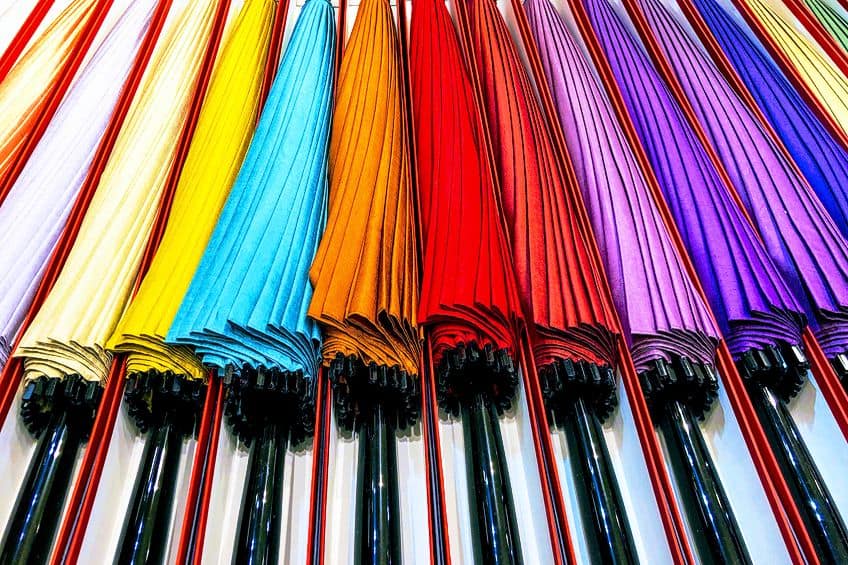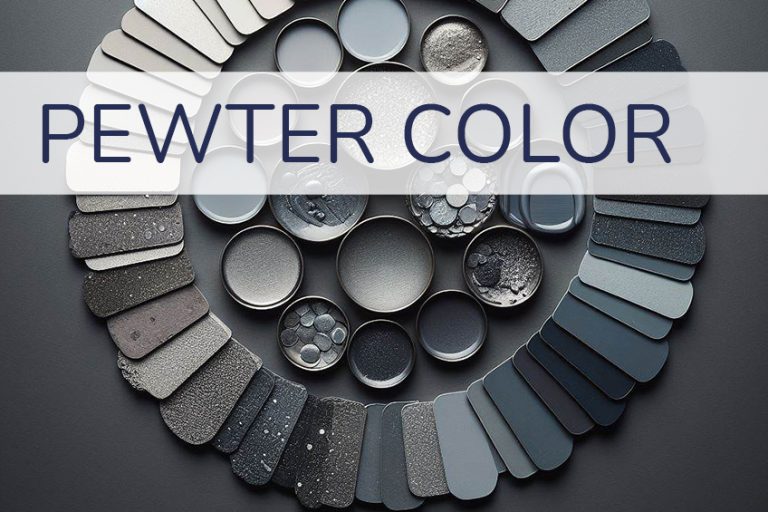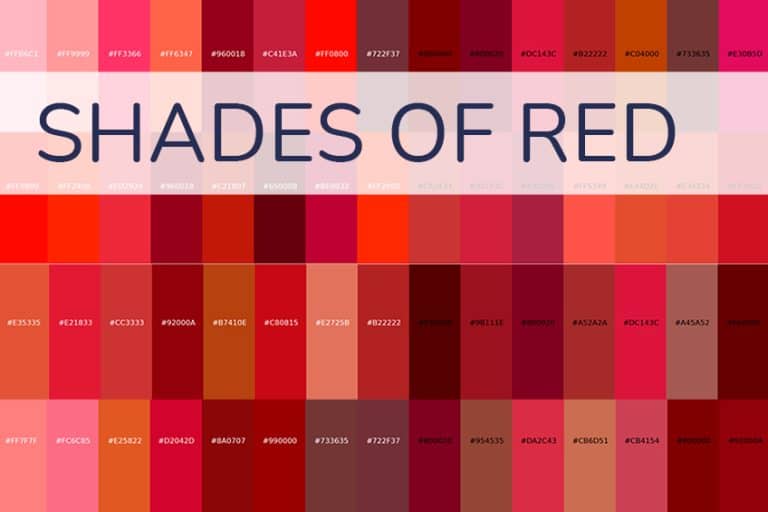Japanese Color Meanings – Symbolic Colors in Japanese Culture
All colors have meaning, but they are not all the same, as different countries and cultures play a big part in how people perceive colors. Japan is a country steeped in history, where colors are perceived differently to the Western world. They have developed a beautiful language of colors that can be seen in their clothes, art, and rituals. The Japanese culture has also been influenced by the Western world, but many of the Japanese color meanings are still applicable today. Let us now discuss the various color meanings in Japan, so we can gain a little more insight into this remarkable culture!
What Is the Influence of Colors in the Japanese Culture?
There are quite a few lucky colors in Japan, some are more important at weddings, while others are often used in various rituals. There are also some rules to using different colors, especially with the kimono colors. Besides the influence of the Western world, traditional Japanese colors have also been heavily influenced by China. The influence of Japanese color symbolism goes as far back as the seventh century when there was a heavy Chinese presence in Japan.
The color meanings in Japan may not be the same as in China, but many of the colors have their origin in various Chinese beliefs, from Confucianism and Buddhism to Taoism. Some of these influenced how colors were associated with social classes, which then affected the growth of Japanese color meanings.
One of the biggest influences on Japanese color symbolism was the philosophy of Zen Buddhism, which is similar to the Japanese philosophy of Shintoism. These two religions overlapped, but later in the 19th century, they were officially separated by the Meiji regime. Shinto philosophy has animalistic connections, where various nature spirits are worshiped, and where various colors have meaning.
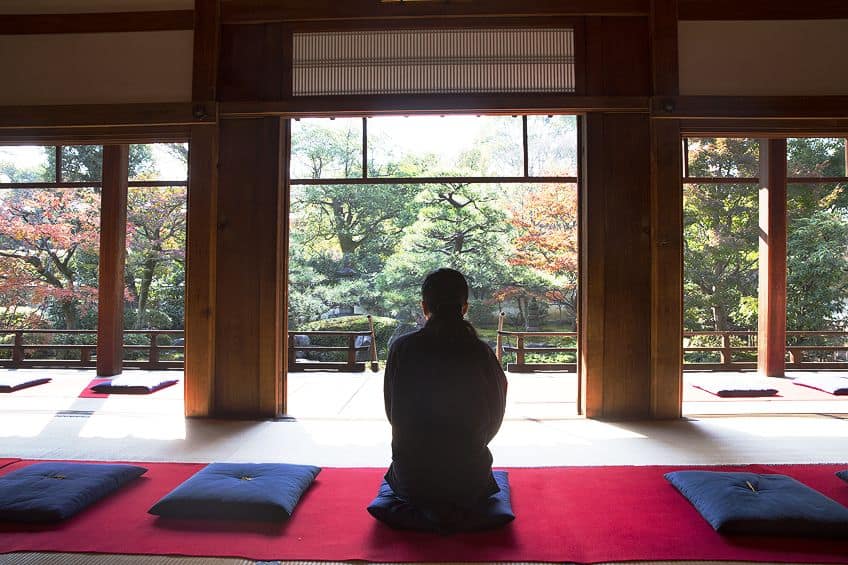
The colors are what represent the core values of living a good and modest life. The four primary colors in this Japanese system include red, white, blue, and black. Other colors also have meaning, but these four colors are prominent and form part of most traditional Japanese architecture, and clothing, and are used in other events.
Meaning of Kimono Colors
The kimono is a traditional Japanese garment that has existed for many years. The kimono is a symbol of good fortune and long life, and the patterns and colors used are connected to the virtues of the wearer, or it is related to a special event, or it can also be related to a specific season. So, many of the colors and patterns are only worn at a particular time of year. For example, if you wear blue, which is a summer color in spring, it could be considered improper.
The kimono colors are similar to the traditional Japanese colors. The one part of the outfit that is seen as the most important is the sash or belt, which is known as the obi.
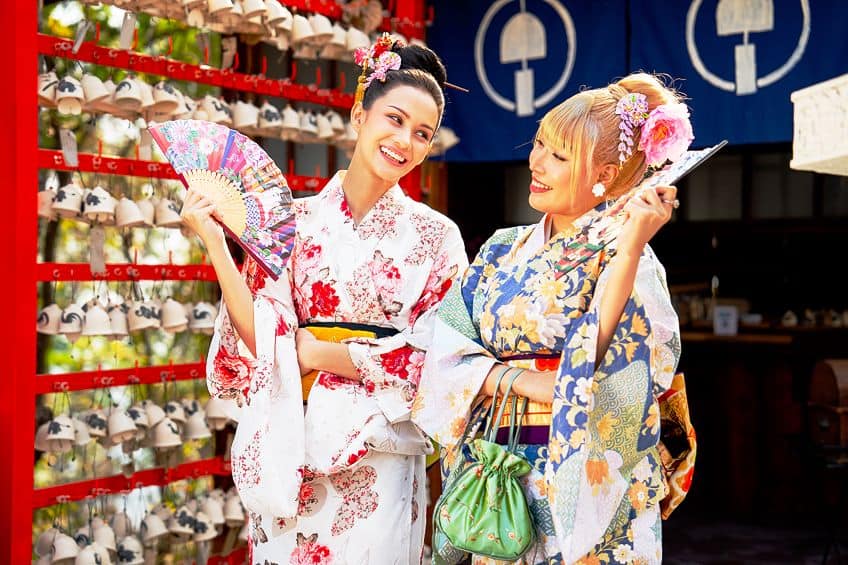
This part of the outfit acts as a focus point, so the same kimono can have different “belts”, which can change the whole impression the outfit makes. So, if a woman has a colorful obi or belt, and is wearing a white kimono, it could mean she is off to a wedding, even though white is a symbol of mourning. Next, let us discuss in more detail the different Japanese color meanings.
Traditional Japanese Colors and Their Meaning
Two of the more prominent Japanese colors are red and white, which can be found in the country’s national flag. Both these colors are also used as decorations for various events and are mainly associated with joy. The colors are also important in certain ceremonies like weddings or birthdays. Let us now look at these two colors in more detail, followed by a few other important and lucky colors in Japan. The term for color in Japan is “iro”.
Red (Aka)
What does red mean in Japan? Red is one of the major colors in Japan and the color means many things, such as passion, strength, self-sacrifice, authority, prosperity, and happiness. Red is also the symbolic color of the nation and is used as a full red circle that represents the sun, surrounded by white on the national flag. When festivals are held, red and white are often the colors you will notice. Red is also seen as the color meaning peace and wealth within the family. Red will also be a color you see at birthdays and other events, for example, if money is offered as a gift, it usually comes in a red envelope.
The red color is also used often in Japanese architecture, mostly at the Shinto shrines. The red color or “akani”, is considered to offer protection from evil. Red is also used to strengthen the spiritual connection with the gods being worshiped in the shrines.
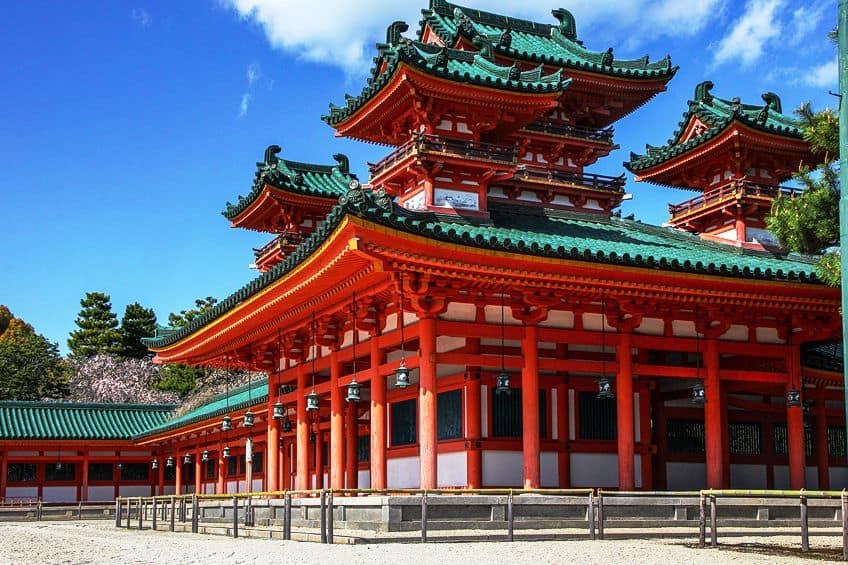
Red was also used in the 15 to 16th century, during the Japanese civil wars. The samurai warriors wore the colors as they represented power and strength. The red color has also been used for centuries by Japanese women as makeup. For many years before lipstick became popular, noblewomen made traditional lipstick from safflowers, which is still used by some today. The color is believed to help protect their beauty.
White (Shiro)
White is a color that stands for purity and is also considered a blessed and sacred color. White forms the background for the national flag, which symbolizes the people’s reverence for their gods. White also represents humility, simplicity, divinity, truth, and mourning. In past years, white was often the color worn to funerals and was not generally used in everyday life.
Today, the Shinto priests still wear white, and it is the color that is the focus at many of the shrines, for example, white pebbles or sand, representing the purity of the gods.

The samurai would also wear white clothing when performing the hara-kiri or seppuku ritual, a form of ritualistic suicide. When Japan was opened up to the Western world, there was some influence and today white is often worn as an everyday color, while black has become the color for mourning.
Black (Kuro)
Black is a popular color and is mainly associated with mystery, formality, night, mourning, elegance, and anger. The color can also represent evil, unhappiness, and misfortune. Traditionally, black is also associated with masculinity and men wore black at events like weddings. One of the older methods of using black in Japan, was in tattoos, especially by fishermen. The samurai also liked to wear black armor, which shone and reflected. The black color has also been used since the earliest days when women wore makeup.
It was tradition to even apply black to the teeth, using a combination of vinegar and iron, which is also believed to prevent tooth decay. This is not practiced all that much today, but a few still observe the traditions at funerals or other special occasions.

In calligraphy, black also plays an important part, especially in what is known as “ink painting” or “sumi-e”. This involves using black ink on a white space or surface, which is usually handmade paper. The artist uses various shades of black to produce beautiful compositions.
Blue (Ao)
Blue is associated with fidelity, coolness, cleanliness, and purity, and is one of the most important lucky colors in Japan. Today, the word “ao” is used to describe blue, however, in the past, it described both blue and green and there was not much to distinguish the two colors. Eventually, the word “midori” came into the picture, and today describes the color green.
However, the word “ao” is still used to describe some words, for example, the green traffic lights are known as “ao shingo”, which means “blue signal”.

The color was very common among the Japanese people, as they used dyes from certain plants that were quite common. When the country was opened to the West, many of the visitors noticed how prolific the color was and named it “Japan blue”. Today, the color is still popular and applied to both everyday clothing items and formal wear like Japanese kimonos.
Green (Midori)
Green is another one of the lucky colors in Japan and is also associated with growth, youthfulness, fertility, and vitality. The color is popular in clothing as it represents freshness and restfulness. Tea is another important part of Japanese culture, and matcha green tea stands out with a particular shade of green. In Japan, nature is also important, and they celebrate “Greenery Day” every April to show respect for all things natural and green.
This came about because Emperor Showa (1901 – 1989), the 124th Emperor of Japan, loved nature. To show respect and honor, this day was dedicated to him on his birthday in April.

Purple (Murasaki)
Purple is a color that, as with many cultures, is associated with royalty and nobility, and common folk were not allowed to wear the color for many years. The purple color also signifies spirituality, wisdom, and luxury. Purple is also seen as the color of warriors as it is a symbol of strength. The color was difficult to come by and make, so it was rare and expensive, which also made it unavailable to the common people.
Today, the color is more commonly worn and is seen as a bold and luxurious color option.
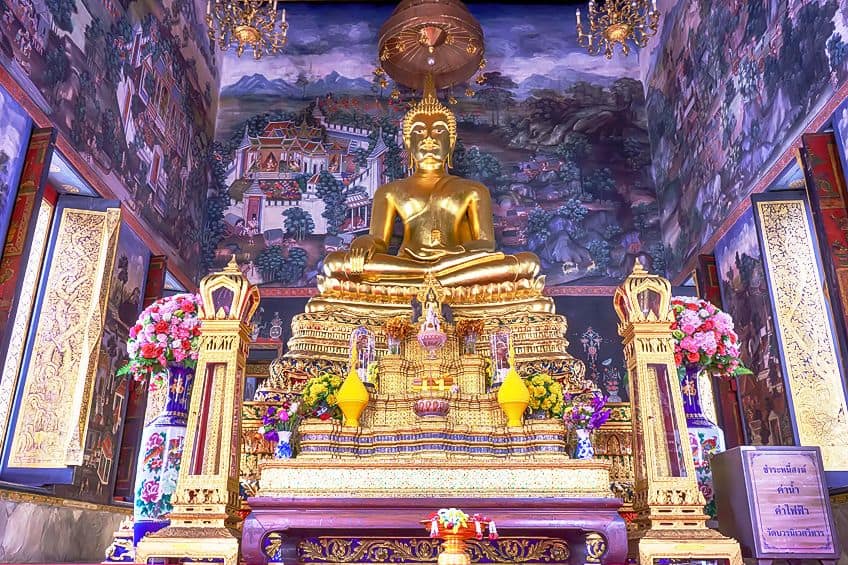
However, in the early years, there was the “twelve-level cap and rank system”, which represented the hierarchy system in government that was different from the hereditary positions. This meant officials got posts because of merit. The 12 ranks were identified by the color cap worn by each official. A deep purple was reserved for the top officials only. Also, when Buddhism was introduced to Japan, the monk who displayed high levels of virtue could wear purple. The color purple is also closely associated with wisteria flowers, which are as popular as cherry blossoms in Japan.
Orange (Orenji)
Orange is a color that represents happiness and love and is a popular color with clothing in Japan. The color orange also symbolizes knowledge and development. The color is written today in the katakana writing system as “orenji”, but the traditional word for the orange color is “daidaiiro”.
Yellow (Kiiro)
Yellow, the color of sunshine represents nature and is a sacred color. Maybe not as significant as red or white, but yellow certainly has a place in the hearts of the Japanese people. In the past, a yellow chrysanthemum was worn to symbolize courage. Today, yellow is used at railway crossings and children wear yellow caps because it helps to increase visibility.
There are various terms or sayings that are also used with the color yellow. For example, a “yellow voice”, means the sharp voices of children and women.
Brown (Chairo)
As with Western associations, brown is also seen as a color of the earth in Japanese culture. The color brown also represents durability and strength. The word that represents brown, “chairo”, is the word for “tea color”, which can be various shades of brown. As mentioned before, tea is an important part of the Japanese culture.
Pink (Pinku)
Pink is another popular color in Japan and can be seen in clothing and other items. The pink color represents youth, good health, happiness, femininity, and spring. The color has a cute and child-like association but is also considered a color of romance and love. The Sakura or cherry blossom trees, which are popular in Japan, are also a beautiful shade of pink.

Gold (Kin’iro)
Gold is the color that represents prestige, royalty, and wealth. It is the color of the heavens and can often be found in temples and shrines. Gold threads were also often used in traditional wear like the kimono. A beautiful art form known as Kintsugi uses gold to mend broken pieces of pottery, which is a symbol of how you should embrace your imperfections and flaws.

Silver (Gin’iro)
Silver is often used in things like weapons and tools, and represents strength, precision, and masculinity. Other associations with silver include reliability, intelligence, modesty, security, and maturity. Silver jewelry is also important in Japanese culture and is used in special ceremonies and other celebrations.
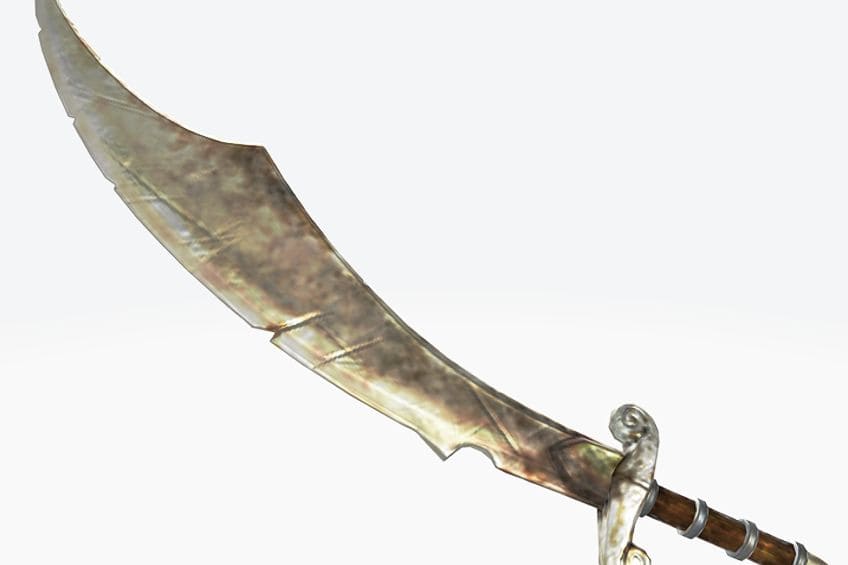
Learning the significance of colors can be interesting, especially if you bring in different cultural aspects. Understanding the Japanese color meanings can be fascinating and inspiring, but it can also be challenging. There are many influences and beliefs, and even though there is so much more to the importance of color, we hope that we have provided a clear and simple explanation of the color meanings in Japan.
Take a look at our Japanese colors webstory here!
Frequently Asked Questions
What Are Some of the Lucky Colors in Japan?
The color that sits at the top of the list of lucky colors in Japan is blue. However, red is also a favorable color, along with white, purple, green, and yellow.
What Does Red Mean in Japan?
Red has many meanings in Japan, but it is a color that represents peace, strength, protection, power, and prosperity. Red is a strong spiritual color that is said to ward off evil and bad luck.
What Is the Most Popular Color in Japan Today?
Even though there are many significant colors that have important meanings in Japan, recent surveys taken in 2019 indicate that blue is one of the more popular colors, closely followed by black, white, and pink.
In 2005, Charlene completed her Wellness Diplomas in Therapeutic Aromatherapy and Reflexology from the International School of Reflexology and Meridian Therapy. She worked for a company offering corporate wellness programs for a couple of years, before opening up her own therapy practice. It was in 2015 that a friend, who was a digital marketer, asked her to join her company as a content creator, and this is where she found her excitement for writing.
Since joining the content writing world, she has gained a lot of experience over the years writing on a diverse selection of topics, from beauty, health, wellness, travel, and more. Due to various circumstances, she had to close her therapy practice and is now a full-time freelance writer. Being a creative person, she could not pass up the opportunity to contribute to the Art in Context team, where is was in her element, writing about a variety of art and craft topics. Contributing articles for over three years now, her knowledge in this area has grown, and she has gotten to explore her creativity and improve her research and writing skills.
Charlene Lewis has been working for artincontext.org since the relaunch in 2020. She is an experienced writer and mainly focuses on the topics of color theory, painting and drawing.
Learn more about Charlene Lewis and the Art in Context Team.
Cite this Article
Charlene, Lewis, “Japanese Color Meanings – Symbolic Colors in Japanese Culture.” Art in Context. October 25, 2023. URL: https://artincontext.org/japanese-color-meanings/
Lewis, C. (2023, 25 October). Japanese Color Meanings – Symbolic Colors in Japanese Culture. Art in Context. https://artincontext.org/japanese-color-meanings/
Lewis, Charlene. “Japanese Color Meanings – Symbolic Colors in Japanese Culture.” Art in Context, October 25, 2023. https://artincontext.org/japanese-color-meanings/.


